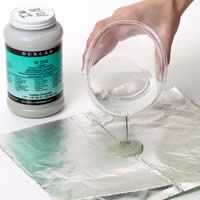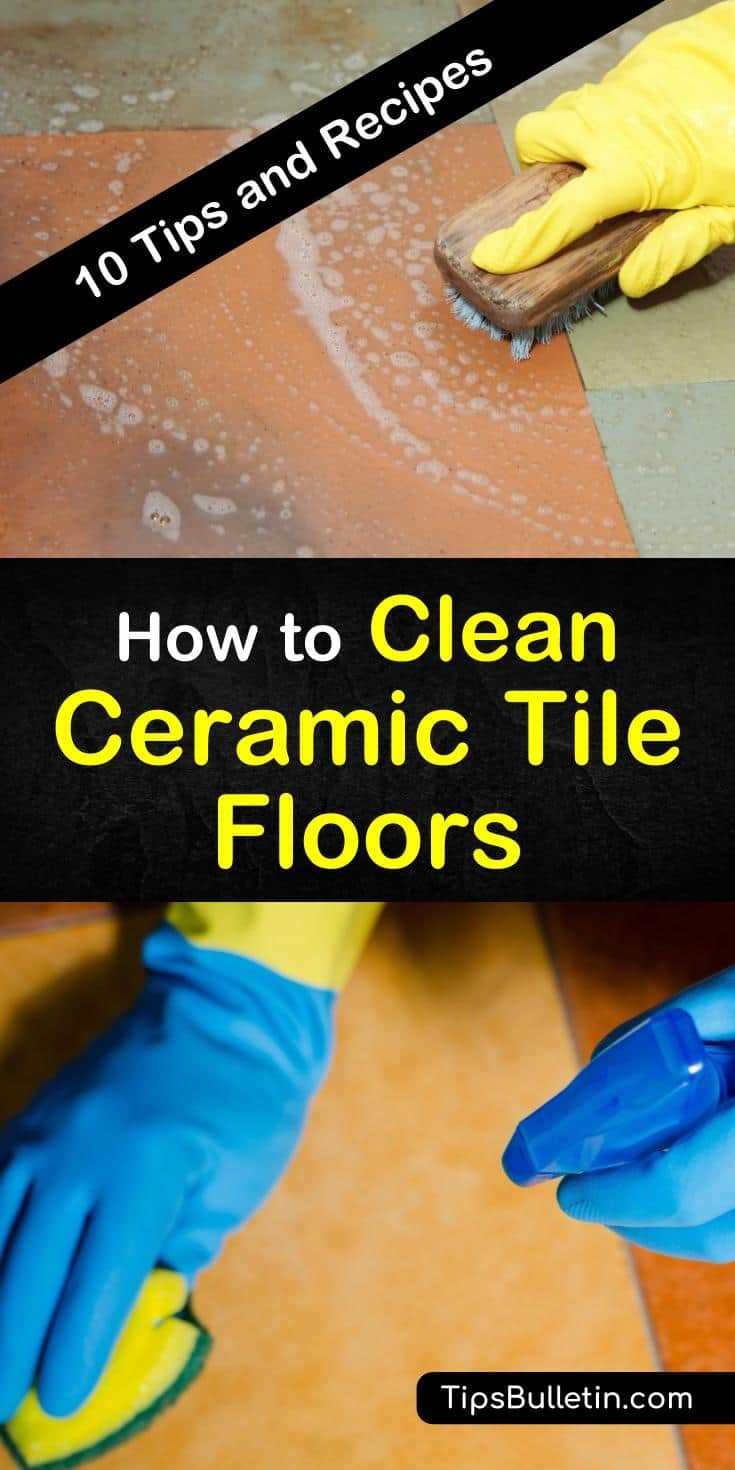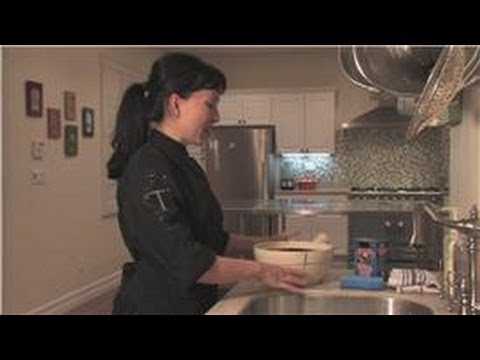Ceramic pottery is a beautiful addition to any home decor, but over time it can accumulate dirt and grime, especially if it is left unglazed. Cleaning unglazed ceramic pottery requires special care and attention to preserve its unique beauty and delicate nature. In this step-by-step guide, we will walk you through the process of cleaning your unglazed ceramic pottery, ensuring that it remains in pristine condition for years to come.
Step 1: Gather Your Supplies
Before you begin cleaning your unglazed ceramic pottery, gather all the necessary supplies. You will need a soft brush, such as a toothbrush or a paintbrush with soft bristles, a mild dish soap, a soft cloth or sponge, and warm water. Avoid using abrasive cleaners or scrub brushes, as they can damage the delicate surface of the pottery.
Step 2: Remove Loose Dirt and Dust
Start by gently removing any loose dirt and dust from the surface of the pottery. Use the soft brush to lightly brush away any debris, working in circular motions. Be careful not to apply too much pressure, as this can scratch the pottery. If the pottery has intricate designs or crevices, use a toothpick or a soft cloth to reach those areas.
Step 3: Prepare a Cleaning Solution
In a bowl or sink, mix a small amount of mild dish soap with warm water to create a gentle cleaning solution. Avoid using hot water, as it can cause the pottery to crack or warp. Stir the mixture gently to create suds.
Step 4: Clean the Pottery
Dip the soft cloth or sponge into the soapy water and gently wash the surface of the pottery. Again, use circular motions and avoid applying too much pressure. Pay close attention to any areas that may be stained or discolored, and gently rub them with the cloth or sponge. Rinse the cloth or sponge regularly to remove any dirt or soap residue.
Step 5: Dry and Finish
After cleaning the pottery, rinse it thoroughly with clean water to remove any remaining soap residue. Use a soft cloth or towel to pat the pottery dry, taking care not to rub or scrub it. Leave the pottery to air dry completely before returning it to its display area.
Step 6: Apply a Protective Finish (optional)
If you would like to add an extra layer of protection to your unglazed ceramic pottery, you can apply a ceramic sealer or wax. Follow the instructions on the product carefully, and make sure the pottery is completely dry before applying the finish. This step is optional, but it can help to keep your pottery looking its best for longer.
Remember, cleaning unglazed ceramic pottery requires a gentle touch and careful attention to detail. By following these step-by-step instructions, you can confidently clean your pottery without causing any damage. Regular cleaning and maintenance will ensure that your unglazed ceramic pottery remains a stunning centerpiece in your home for many years to come.
Choosing the Right Cleaning Method
When it comes to cleaning unglazed ceramic pottery, it is important to choose the right method to ensure that you don’t damage the delicate surface. Here are some factors to consider when deciding on the appropriate cleaning method:
- Type of dirt or stain: The first step in choosing the right cleaning method is to determine the type of dirt or stain on the pottery. Different cleaning methods work best for specific types of dirt, so it is important to identify the problem before proceeding.
- Durability of the pottery: Unglazed ceramic pottery can be delicate, especially if it is old or has intricate designs. If the pottery is fragile, you should opt for a gentler cleaning method to avoid any potential damage.
- Availability of cleaning products: Depending on the type of dirt or stain, you may need specific cleaning products to effectively clean the pottery. Make sure to check if these products are readily available to you before choosing a cleaning method.
- Time and effort: Some cleaning methods require more time and effort than others. Consider your schedule and available resources when deciding on a cleaning method.
Once you have considered these factors, you can choose the most suitable cleaning method for your unglazed ceramic pottery. From gentle wiping to using specialized cleaning solutions, there are various options available to help you restore the pottery’s original beauty.
Gathering the Necessary Supplies
Before you begin cleaning your unglazed ceramic pottery, it’s important to gather all the necessary supplies. Having these supplies on hand will ensure that you have everything you need to properly clean and care for your pottery.
Here are the supplies you will need:
- A soft-bristle brush or toothbrush
- Mild liquid dish soap
- White vinegar
- Baking soda
- A bowl or bucket
- A sponge or cloth
- Water
- Soft towels or cloths for drying
- Hairdryer (optional)
Having a soft-bristle brush or toothbrush will help you gently scrub away any dirt or stains on the pottery’s surface. It’s important to use a brush with soft bristles to avoid scratching or damaging the pottery.
Mild liquid dish soap is an effective cleanser that is gentle enough to use on unglazed ceramic pottery. Look for a soap that is free from harsh chemicals or additives.
White vinegar is a natural cleaning agent that can help remove tough stains or build-up on the pottery. Dilute it with water in a 1:1 ratio before using it on your pottery.
Baking soda is another natural cleaning agent that can help remove stains and odors from unglazed ceramic pottery. It can be used in combination with the vinegar or on its own.
Having a bowl or bucket will allow you to mix any cleaning solutions or fill them with water for rinsing the pottery. Make sure they are clean and large enough to hold the pottery you are cleaning.
A sponge or cloth will be used to apply the cleaning solutions and gently scrub the pottery’s surface. Choose a soft sponge or cloth to avoid scratching the pottery.
Water is necessary for rinsing the pottery after cleaning and removing any residue from the cleaning solutions. Make sure you have access to clean water for this step.
Soft towels or cloths are essential for drying the pottery after cleaning. They should be clean and absorbent to ensure that the pottery is completely dry before storing or displaying it.
An optional item you may want to have is a hairdryer. This can be used on a low, cool setting to speed up the drying process if needed.
Once you have gathered all these supplies, you will be ready to start cleaning your unglazed ceramic pottery. Make sure you have a clean and well-ventilated area to work in, and follow the next steps carefully to ensure the best results.
Preparing the Pottery for Cleaning
Before you begin cleaning your unglazed ceramic pottery, it’s important to take proper precautions and prepare the pottery for cleaning. This will help ensure that the cleaning process is effective and does not cause any damage to the pottery.
Gather necessary materials:
- A soft-bristled brush
- Mild dish soap
- Warm water
- A bowl or basin
Find a suitable location:
Choose a well-ventilated area with a flat surface to clean your pottery. It’s important to have enough space to comfortably work with the pottery and the cleaning materials.
Create a cleaning solution:
- Fill the bowl or basin with warm water.
- Add a small amount of mild dish soap to the water.
- Stir the mixture gently to create suds.
Test a small area:
Before cleaning the entire pottery item, it’s a good idea to test the cleaning solution on a small, inconspicuous area. This will help you determine if the cleaning solution is safe for your pottery and if any additional precautions need to be taken.
Applying the Cleaning Solution
Once you have gathered your cleaning materials, it’s time to apply the cleaning solution to your unglazed ceramic pottery.
- Prepare the cleaning solution: Mix a mild soap or detergent with warm water. You can also use a specialized ceramic cleaner if desired. Avoid using harsh chemicals or abrasives that can damage the pottery.
- Test the cleaning solution: Before applying the solution to the entire pottery, it’s recommended to test it on a small, inconspicuous area. This will help you ensure that the solution does not cause any undesirable effects, such as discoloration or damage.
- Apply the solution: Dip a soft cloth or sponge into the cleaning solution and gently scrub the surface of the pottery. Pay extra attention to any stains or dirt buildup. For hard-to-reach areas or intricate designs, you can use a soft-bristled brush or a toothbrush.
- Let the solution sit: After applying the cleaning solution, let it sit on the pottery for a few minutes to allow it to penetrate and loosen any stubborn dirt or stains.
- Gently scrub: Using gentle circular motions, continue to scrub the pottery until you are satisfied with the cleanliness. Avoid using excessive force or harsh scrubbing, as this can cause damage to the fragile surface of the pottery.
- Rinse with clean water: Once you have finished scrubbing, rinse the pottery thoroughly with clean water to remove any residual soap or cleaning solution. Make sure to rinse away all traces of the cleaning agent to prevent any long-term damage.
- Dry the pottery: Pat the pottery dry with a clean towel or allow it to air dry completely. Avoid using heat sources such as a hairdryer or direct sunlight, as this can lead to cracking or fading of the pottery.
By following these steps and using the recommended cleaning materials, you can effectively clean your unglazed ceramic pottery without causing any damage. Remember to always handle the pottery with care and avoid using abrasive cleaners or harsh chemicals that can harm its delicate surface.
Scrubbing and Removing Stains
When it comes to unglazed ceramic pottery, scrubbing and removing stains can require some extra effort. Here are some steps you can follow to effectively clean and remove stains from unglazed ceramic pottery:
- Prepare a cleaning solution by combining warm water with a mild dish soap or a specialized pottery cleaner. Avoid using harsh chemicals or abrasive cleaners, as they can damage the pottery.
- Wet a soft cloth or sponge with the cleaning solution and gently scrub the pottery in circular motions. Make sure to cover all areas, especially those with stains or discoloration.
- For tougher stains, you can use a soft-bristled brush or a toothbrush to scrub the affected areas. Be gentle to avoid scratching or damaging the pottery.
- If the stains persist, you can create a paste by mixing baking soda with water. Apply the paste to the stained areas and let it sit for a few minutes. Then, gently scrub with a soft cloth or brush.
- Rinse the pottery thoroughly with clean water to remove any residue or cleaning solution. Make sure to remove all traces of the cleaning agents, as they can potentially affect the appearance or patina of the pottery.
- Dry the pottery completely using a soft cloth or allow it to air dry. Avoid using heat sources or direct sunlight to dry the pottery, as they can cause cracks or damage.
- If the stains are particularly stubborn or the pottery is heavily soiled, you may need to repeat the cleaning process multiple times or seek professional assistance.
It’s important to handle unglazed ceramic pottery with care and avoid using harsh cleaning methods. Regular and gentle cleaning, along with proper maintenance, can help preserve the natural beauty and integrity of your beloved ceramic pottery.
Drying and Finishing
Once you have finished cleaning your unglazed ceramic pottery, it is important to properly dry and finish it to ensure its longevity and appearance.
- Air drying: The first step is to let the pottery air dry completely. Place it in a well-ventilated area and allow the moisture to evaporate naturally. Avoid using heat sources or direct sunlight, as they can cause the pottery to crack or warp.
- Towel drying: After the pottery has air dried for some time, you can gently pat it dry with a clean, soft towel. Be careful not to rub too hard, as this can damage the surface of the pottery.
- Buffing: If your unglazed ceramic pottery has any stains or discoloration that persist after cleaning, you can try using a soft cloth or sponge to gently buff the surface. This can help remove any remaining dirt or residue and restore the pottery’s original appearance.
- Sealing: Depending on the type of unglazed ceramic pottery you have, you may need to seal it to protect it from moisture and stains. It is important to choose a sealer that is compatible with the type of pottery you have. Follow the manufacturer’s instructions for applying the sealer and allow it to dry thoroughly.
- Displaying: Once your unglazed ceramic pottery is dry and finished, you can proudly display it in your home or garden. Be sure to choose a location that is safe and secure, away from any potential hazards. You can use stands or shelves to showcase your pottery and enhance its visual appeal.
By following these steps, you will be able to properly dry and finish your unglazed ceramic pottery, preserving its beauty and ensuring its durability for years to come.
Proper Storage and Maintenance
Proper storage and maintenance are crucial to protect and preserve unglazed ceramic pottery and ensure its longevity. Here are some tips to follow:
- Handling: When handling unglazed ceramic pottery, be gentle to avoid any bumps or impacts that can cause chips or cracks.
- Storage location: Choose a cool and dry place to store your unglazed ceramic pottery. Avoid places with extreme temperature changes or high humidity, as these conditions can damage the pottery.
- Individual wrapping: Wrap each piece of unglazed ceramic pottery in acid-free tissue paper or bubble wrap to protect it from scratches and impacts.
- Packing: When packing multiple pieces of unglazed ceramic pottery together, separate them with layers of foam or bubble wrap to provide cushioning and prevent them from knocking against each other.
- Display considerations: If you choose to display your unglazed ceramic pottery, make sure to use proper display stands or holders to avoid direct contact with hard surfaces that can cause damage.
Additionally, regular maintenance can help keep your unglazed ceramic pottery looking its best:
- Cleaning: Follow the cleaning steps mentioned earlier in this guide to remove dirt and stains from your unglazed ceramic pottery with care.
- Stain prevention: To prevent stains from setting on unglazed ceramic pottery, avoid placing it in contact with food, liquids, or other substances that can leave marks.
- Inspect for damage: Regularly inspect your unglazed ceramic pottery for any signs of damage, such as chips, cracks, or discoloration. Promptly address any issues to prevent further deterioration.
- Re-sealing: If necessary, re-seal unglazed ceramic pottery with a suitable sealant to maintain its integrity and protect it from stains and moisture.
- Handling during use: When using unglazed ceramic pottery for cooking or serving, always handle it with care to avoid accidental impacts that can result in damage.
By following these proper storage and maintenance practices, you can ensure that your unglazed ceramic pottery remains in excellent condition for years to come.
FAQ:
What is unglazed ceramic pottery?
Unglazed ceramic pottery refers to pottery that does not have a layer of glaze or a glossy finish on its surface. It has a natural, matte appearance and is often used for decorative purposes.
Why would I need to clean unglazed ceramic pottery?
Unglazed ceramic pottery can accumulate dust, dirt, and stains over time, especially if it is displayed outdoors or in a high-traffic area. Cleaning it regularly helps maintain its appearance and prevent damage.
What supplies do I need to clean unglazed ceramic pottery?
You will need a soft brush or sponge, mild detergent or soap, water, a bucket or basin, and a soft cloth or towel for drying.
How do I remove stains from unglazed ceramic pottery?
To remove stains, mix a solution of warm water and mild detergent or soap. Dip the brush or sponge into the solution and gently scrub the stained areas. Rinse with clean water and dry with a soft cloth.
Can I use harsh chemicals or abrasive cleaners on unglazed ceramic pottery?
No, it is not recommended to use harsh chemicals or abrasive cleaners on unglazed ceramic pottery as they can damage the surface and cause discoloration. Stick to mild detergents or soaps and gentle cleaning methods.
How often should I clean my unglazed ceramic pottery?
It depends on the location and condition of the pottery. If it is displayed outdoors or in a dusty area, it may need to be cleaned more frequently. As a general guideline, cleaning it every few months should be sufficient to keep it looking its best.


